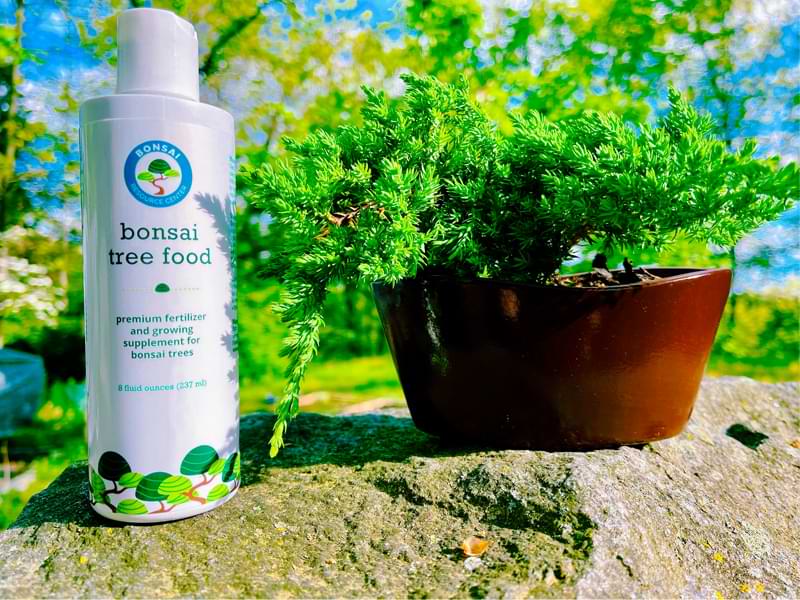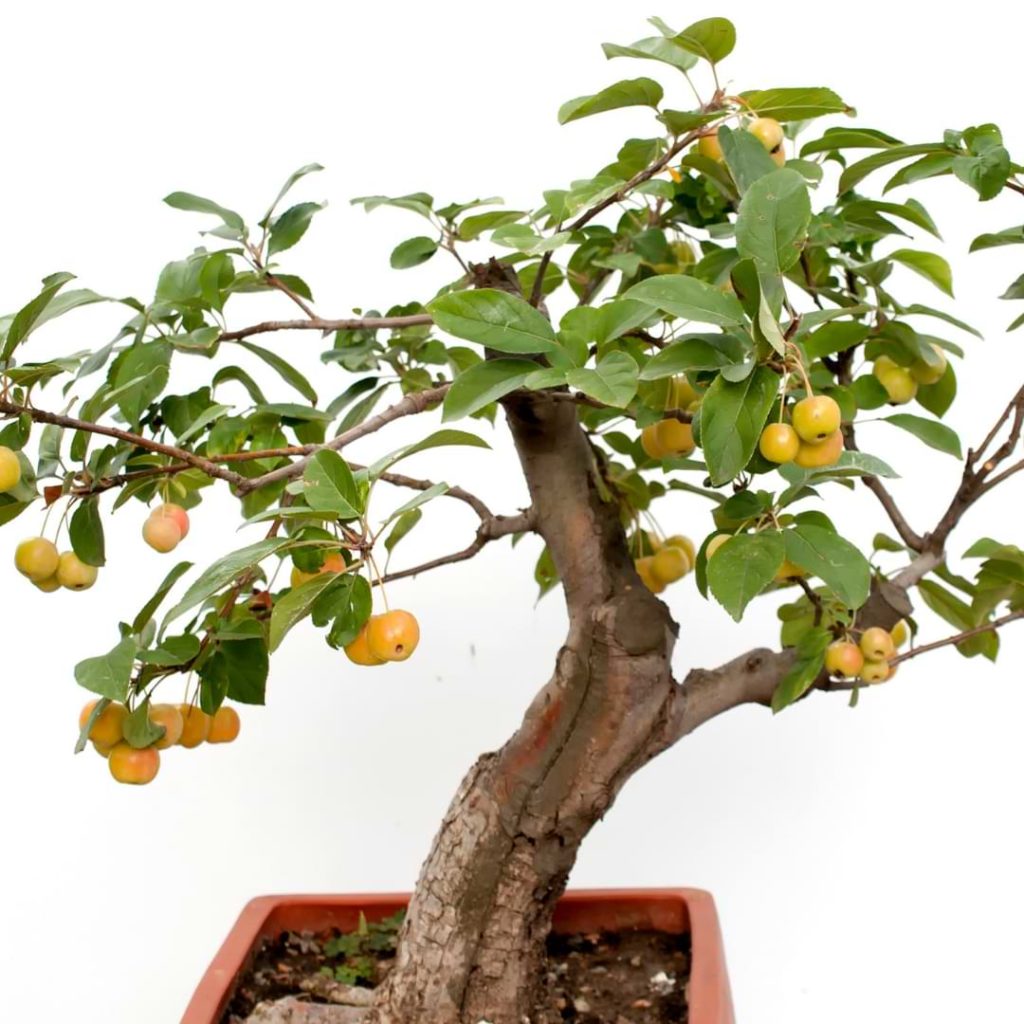Citrus may not be the first thing that comes to mind when you think of bonsai, but citrus lemon trees make a great addition to a bonsai collection. While you may or may not see fruit on a bonsai citrus lemon tree, you’ll get to enjoy a beautiful evergreen bonsai with a wonderful lemon scent.
Because lemon seeds are easy to acquire, starting citrus lemon trees from seed is a fun project. Creating a citrus bonsai lemon tree from seed takes patience, but it is rewarding to watch the tree develop over time.
Keep reading to learn how to start a bonsai lemon tree and how to care for it.
How to Start a Bonsai Lemon Tree
Deciding to start a bonsai lemon tree from seed seems easy. After all, we walk past lemons with seeds every time we go to the grocery store. However, there’s a little more to the process.
To start a bonsai lemon tree, you’ll need to find seeds from a lemon tree suitable for bonsai. Meyer lemons work well because they are more compact than regular lemons. Although not available at every grocery store, you’ll likely find them at speciality shops.
Materials You’ll Need to Bonsai a Lemon Tree
A lemon
Again, Meyer lemons are likely to be your best choice. Regular lemons will be harder to bonsai because they naturally grow larger. Look for organic Meyer lemons to get the best germination rate.
Potting soil
Regular potting soil mix should work well for lemons. Meyer lemons grow best with well-draining, slightly acidic soil, which is what most regular commercial potting soil should be.
Container or tray
Use a shallow container or tray to start the seeds. You’ll want to start several seeds in case a few don’t survive.
Plant Pot
Eventually, you’ll need a larger container. Start with a 4-inch pot once your seedlings are mature enough to be potted up.
Step-by-Step Guide on How to Bonsai a Lemon Tree
The process for starting a bonsai lemon tree from seed is straightforward. Here’s what to do.
1. Prepare the Seeds
Remove the seeds from the Meyer lemon. Rinse the seeds in cold water. This removes particles clinging to the seeds that could cause mold or rot.
2. Prepare the Planter
Start with the shallow container or tray. You won’t need the 4-inch container until your lemon seedlings have successfully germinated and begun to mature.
Fill the container or tray with moist potting soil. Now you’re ready to plant the seeds.
3. Grow the Seedlings
Place the lemon seeds about ½ inch deep in the soil and cover. Keep some space between each seed to allow room as the seeds grow.
Make sure to keep the soil moist as you wait for the seeds to germinate. Place the seeds somewhere warm with a temperature of at least 70 degrees. The seeds don’t need sunlight until they begin to germinate; germination usually takes between 2-3 weeks.
Once the seedlings have sprouted, move the tray to a sunny location. Meyer lemons need 8 hours of direct sunlight each day to thrive.
Continue to water whenever the top inch of soil is dry. When the seedlings have developed multiple leaves, it’s time to move them to a larger container. Move each seedling to its own individual 4-inch container. If several seedlings are doing well, keep them because it’s still possible that some lemon seedlings won’t survive. You can always give away extras when the seedlings are more mature.
Wait until the seedlings are at least one year old before beginning to shape into bonsai. At this stage, your lemon bonsai should have vibrant green leaves, but don’t expect fruit anytime soon. Lemons grown from seed can take anywhere from 5 to 15 years to begin producing fruit. In the meantime, you’ll get to enjoy the beautiful foliage and scent.
Citrus Bonsai Lemon Tree Care Guidelines
Keeping citrus bonsai lemon trees alive isn’t too difficult. However, in order for your tree to thrive, you’ll want to make sure you give it the correct care.
Position
Citrus bonsai lemons can be grown indoors as long as they have access to direct sunlight. Of course, they will do better when grown outdoors.
If you live somewhere with a warm climate, you may be able to grow citrus bonsai outdoors all year. However, if you live in a moderate or cold climate, your lemon tree should only be outdoors during the summer.
Temperature
You probably already know that lemon trees like heat. Lemon trees require a temperature above 50 degrees Fahrenheit. If the temperature is going to drop below 50 degrees at night, you need to bring the tree indoors.
Light
For best results, your bonsai lemon tree needs at least 6 hours of sunlight, but it will do even better with 8 hours of sunlight. Depending on the conditions in your area, you may need to supplement natural sunlight by using artificial light during the winter months.
You don’t necessarily have to use grow lights, but your tree will slow down its growth during the winter when it doesn’t receive as much light. If you have started your lemon tree from seed, you’ll probably want to use artificial light during the first few winters so your tree develops more quickly.
Watering
Citrus bonsai trees need to be watered well, but they do not need to sit in wet soil all the time. Water whenever the top inch of the soil feels dry. Be sure to thoroughly soak the soil each time you water. Your bonsai container should have drainage holes to allow excess water to run off.
Citrus can handle a little bit of drying out, so if you aren’t certain whether it’s time to water yet, you can probably wait one more day. Overwatering is more of a danger when plants are indoors. If the tree is outdoors, you’ll likely need to water more frequently.
Avoid using water with lime on your bonsai lemon tree. If you notice that your tap water seems to be affecting your lemon tree, switch to a different source. I don’t usually encourage people to collect rainwater for watering because it doesn’t make a big difference for most plants, but if you have hard tap water, it’s worth watering your lemon bonsai with rainwater instead.

Fertilizing
Wondering whether you should fertilize your citrus bonsai lemon tree?
These trees can benefit from a light fertilizer application during the main growing season, usually April through August. It’s best to use a fertilizer designed for acid-loving plants.
I suggest using liquid fertilizer and diluting it more than the package calls for. At most, mix the fertilizer at half strength. Avoid using fertilizer sticks designed for outdoor citrus trees grown in the ground, which will be way too strong for small bonsai lemons. Overfertilizing can damage your tree, so be gentle.
Pruning, Wiring & Training
After a year of growth, you can begin shaping your bonsai lemon tree. The tree can tolerate the use of wires as you train it—just watch that the wires do not damage the branches or trunk. After six months of training, prune the top two leaves on the tree to encourage more outward growth.
As long as the tree seems healthy, your bonsai lemon tree can tolerate pruning. If you have enough light during the winter, your lemon tree may continue growing vigorously then as well. It’s possible you might need to prune during the winter, but that’s a decision you’ll need to make based on how your bonsai is doing.
Training a bonsai lemon tree can be tricky, especially if you do not have much experience with bonsai, so it’s not a bonsai tree recommended for beginners to the style.
Repotting
You will need to repot your bonsai lemon tree every two or three years. Plan to do the repotting in the spring before the main growing season begins.
You’ll need to vigorously trim the roots when you repot. You can either repot your tree in the same pot or move to a bigger one depending on the size of your plant.
Be sure to use fresh potting soil when you repot your bonsai lemon tree. Water the tree afterward. The tree might show signs of stress for a few days after repotting, but it should rebound.
Propagation
There are several ways to propagate new lemon trees from a mature bonsai lemon tree. Propagating by seed is unlikely to be an option because it takes so long for lemon trees to mature enough to produce fruit, and they don’t always reliably produce fruit when grown indoors.
However, it is easy to produce new Meyer lemon trees from stem cuttings. Choose a hardened shoot to take as a cutting. Then place the cutting in moist potting soil. Water regularly until the stem begins to root. The roots should begin to develop after about 8 weeks.
Propagating new citrus lemon trees from a mature tree’s stem cuttings is actually more reliable than starting new trees from seed. You’ll get a tree that is a clone of the tree you took the cutting from. You’ll still have to be patient about the growth, but you’ll see fruit in as little as 3 to 4 years if you are able to provide the right growing conditions. For trees grown from seed, the soonest you can expect to see fruit is after 5 years, but sometimes it takes much longer.
Pests & Diseases
Citrus lemon trees are susceptible to a variety of pests and diseases, but most are relatively easy to deal with. Keep a close watch for pests like scale, whitefly, and spider mites.
Wash the leaves off with water from time to time to prevent pests. Check the back of the leaves as well. If you notice even one or two pests, take action before your plant becomes infested.
Once you see evidence of pests, start by using a stream of water to knock off the pests. For some pests, this is all it takes to get rid of them. If that doesn’t work, try using our Leaf Armor Spray, neem oil, or horticultural oil before moving on to stronger measures.
Key Features of the Bonsai Lemon Tree
Meyer lemons make very attractive bonsai lemon trees. They have beautiful green foliage. When they produce flowers, those flowers are white with a dark purple at the base. Both the flowers and the plant itself have a pleasant lemony fragrance. These factors all make lemon trees into attractive bonsai.
Final Thoughts on Citrus Bonsai Lemon Tree
Adding a citrus bonsai lemon tree to your bonsai collection is a great way to add variety. Although it can be difficult to style citrus as a bonsai tree due to its natural growth pattern, it makes a beautiful potted tree.
Watching a lemon tree grow from seed is a fun experience, even if you never get any fruit from the tree. If creating a bonsai from a Meyer lemon seedling doesn’t work as well as you hoped, you can always buy a citrus bonsai lemon tree instead.
Citrus is not a fussy plant to care for indoors, so once you have a citrus bonsai lemon tree that you are happy with, you should be able to enjoy it for a long time.
Have another question about caring for your citrus bonsai lemon tree? Join the conversation in our Facebook group.
Bonsai With Us!
The Bonsai Resource Center is here to help you learn about bamboo bonsai and provide you with the tools you need to keep your plant healthy and strong. Explore our other articles, visit our online shop, and connect with other bonsai lovers in our Facebook group to learn everything you need to know about this rewarding hobby!



